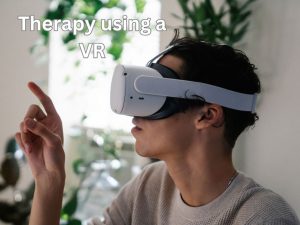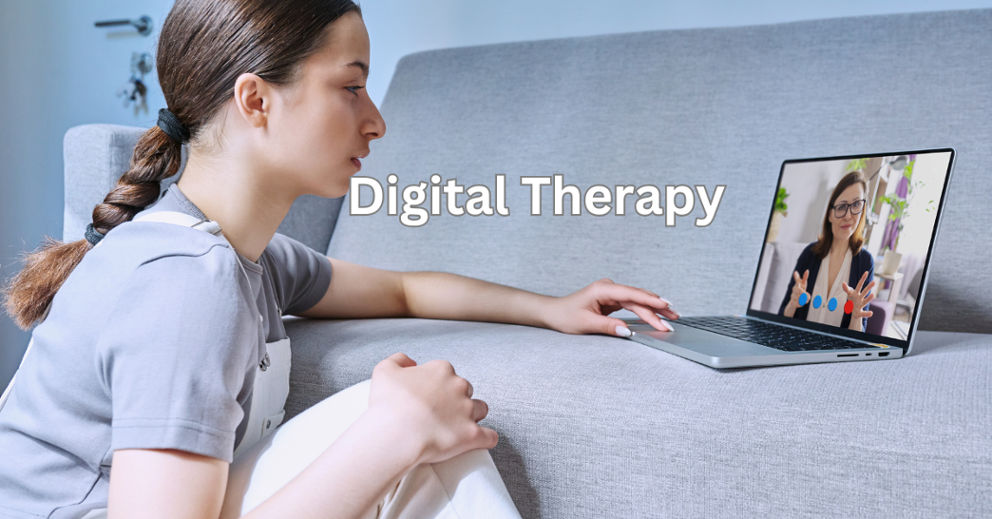Digital Therapy: Mental Health’s Future or just a Fix?
Can technology heal our minds in a world when it is changing every part of our lives? Digital therapy is changing mental health treatment, but is this a trend or something that will last?
Introduction
Mental wellness has never been as important. As levels of stress, anxiety, and depression are on the rise, people from all over the world are looking for creative ways to cope. Presenting digital therapy, a new approach that integrates technology with mental health services. Is it here only for a short time period or the future of mental health? As a psychologist, I have firsthand experience with the benefits and drawbacks of digital therapy. Time-consuming treatments can be replaced with software-based digital therapies, which can be provided as solo or mixed therapies. They can improve currently used therapy approaches and aid in standardizing the way interventions are delivered. Let’s dig into all its advantages and drawbacks.
Why Digital Therapy is Gaining Popularity
Digital therapy is a fresh way of tackling mental health problems and not merely a buzzword. Here is why it becomes more popular by the day.
Accessibility
Accessibility is among the major barriers to mental health service. Other forms of conventional therapies might be too expensive for a person with mobility impairment or for someone who stays in remote locations. Digital therapy bridges this gap by offering patients remote access to mental health apps and online therapy.
Cost – Effective
The cost of attending a traditional therapy hour can range from $100 to $300 per hour. Conversely, digital therapy frequently offers more reasonably priced alternatives. A larger audience can now receive therapy thanks to the free or inexpensive subscriptions offered by several mental health platforms or applications.
Practicality
It can be difficult to find time for treatment because life is so busy. You may get help anywhere, at any time, using tele therapy and mental health apps. Help is only a click away, whether you’re at home, at work, or on the go.
Lack of identity
The stigma from mental health illnesses may prevent many from getting the required treatment. Traditional treatments cannot match the anonymity offered by digital therapy. One can open about sensitive issues from the confines of one’s home, without fear of being judged.
Digital Therapy’s Drawbacks
Despite its benefits, digital therapy is not a universally applicable option. Consider the following restrictions:
No Personal Relationship
The absence of in-person interaction may be a disadvantage for certain people. It might be challenging to recreate the human connection that traditional therapy provides in a virtual environment.
Not for Serious Situations
For serious mental health issues that need intensive care, digital therapy might not be appropriate. Hospitalization or in-person therapy may be required in these situations.
Issues with Data Privacy
There are concerns regarding the security of personal data when using mental health apps. Selecting systems that respect data privacy and adhere to laws like HIPAA is crucial.
Digital therapy is an active instrument that can support typical therapy; it’s not a passing craze. This is how it can benefit yo
CBT Apps for Depression and Anxiety
One of the most effective therapies for depression and anxiety is cognitive behavioral therapy, or CBT. Evidence-based symptom management methods are available through applications or platforms like Mind Canvas, which are examples of CBT. These platforms make it simpler to incorporate CBT concepts into your everyday life by offering interactive activities, mood monitoring, and tailored feedback.
Tele therapy for People with Busy Schedules
The easy scheduling of virtual treatment sessions makes it easy to set mental health as a top priority. Whether you’re a student, parent, or busy professional, tele therapy is the flexibility you need to get the help you need.
Future of Digital Therapy

Future mental health care is going to heavily depend on digital technology, which will supplement, rather than supplant, more traditional therapy. Digital therapy, in the short term, has a bright prospect of being very significant in treatment of mental illness with advancements of AI, machine learning, and individualized care.
Technology Wearable
Apps for mental health are increasingly integrated with wearables, which may include something as simple as fitness trackers or a smartwatch. These provide details about their levels of activity, sleep habits, and level of stress and therefore can better use this to improve mental health with tailored suggestions.
Therapy using Virtual Reality (VR)

The treatments of virtual reality include ailments such as PTSD, phobias, and anxiety disorders. Virtual reality therapy is helpful in a safe context where it helps the patients face and overcome their phobias by creating immersive worlds.
Facts and Figures
• The World Health Organization (WHO) estimates that 1 in 4 persons will deal with a mental health problem at some point in their lives.
•The global digital mental health market size is estimated to be at $17.5 billion for the year 2030, which would be supported by a CAGR of 23.7%.
A clinical research done by the American Psychological Association revealed that 75% of patients who attempted tele therapy were very satisfied.
•The number of downloads for apps has surpassed 100 million in order to cater to the increasing demand for digital treatments.
Conclusion
Digital therapy is not a passing fad but a revolutionary approach to mental health care. For millions of people, it offers a practical, economical, and efficient alternative for traditional therapy, although it may never completely replace it. Digital therapy is evidence that the future of mental health is bright, a belief I hold as a psychologist who believes in innovation’s healing potential.
Are you prepared to start along the path to improved mental health? View Mind Canvas. We can help whether you need someone to chat to or are struggling with depression or anxiety. Because you deserve the best care available and your mental health counts.

